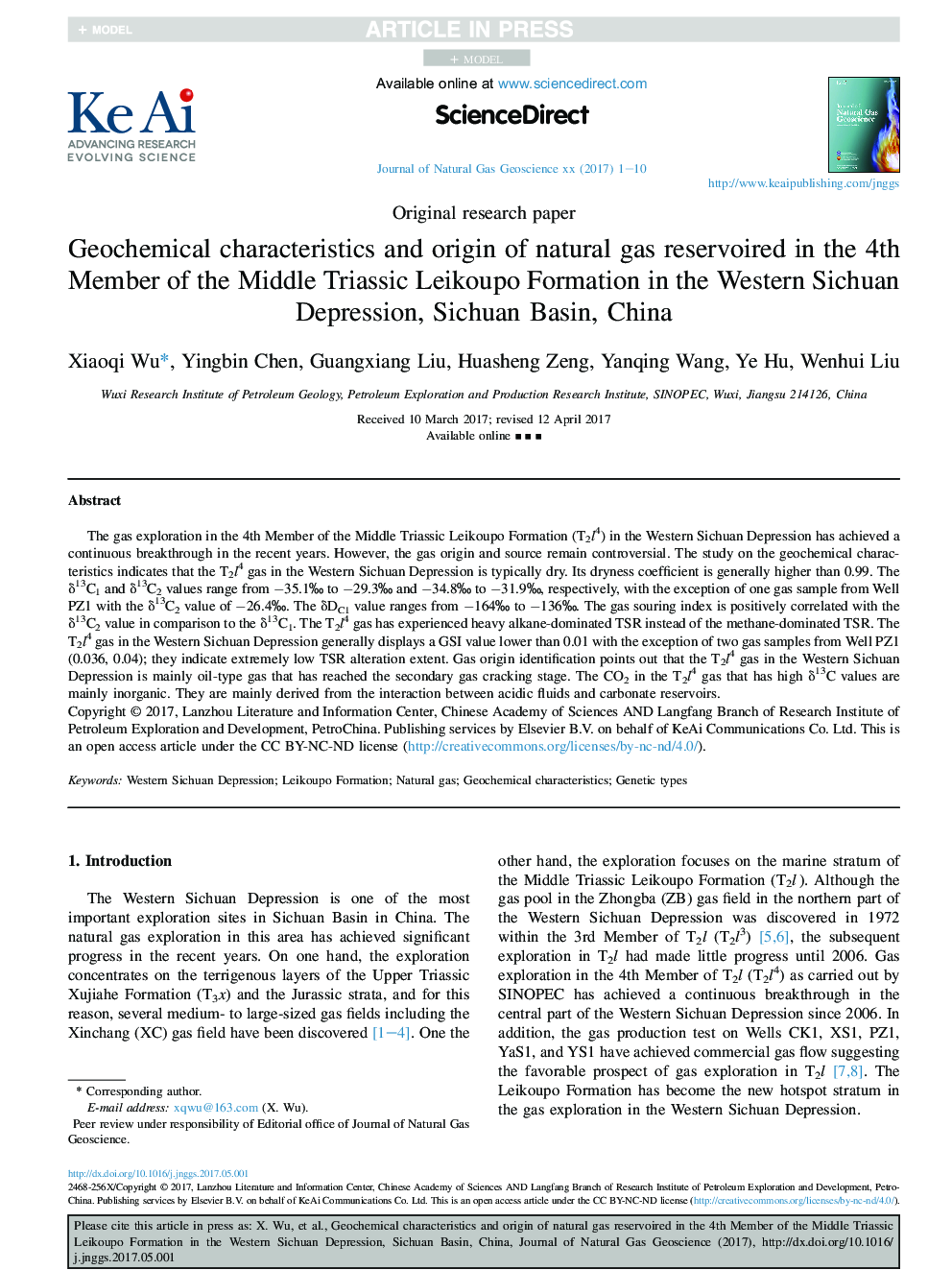| Article ID | Journal | Published Year | Pages | File Type |
|---|---|---|---|---|
| 8124209 | Journal of Natural Gas Geoscience | 2017 | 10 Pages |
Abstract
The gas exploration in the 4th Member of the Middle Triassic Leikoupo Formation (T2l4) in the Western Sichuan Depression has achieved a continuous breakthrough in the recent years. However, the gas origin and source remain controversial. The study on the geochemical characteristics indicates that the T2l4 gas in the Western Sichuan Depression is typically dry. Its dryness coefficient is generally higher than 0.99. The δ13C1 and δ13C2 values range from â35.1â° to â29.3â° and â34.8â° to â31.9â°, respectively, with the exception of one gas sample from Well PZ1 with the δ13C2 value of â26.4â°. The δDC1 value ranges from â164â° to â136â°. The gas souring index is positively correlated with the δ13C2 value in comparison to the δ13C1. The T2l4 gas has experienced heavy alkane-dominated TSR instead of the methane-dominated TSR. The T2l4 gas in the Western Sichuan Depression generally displays a GSI value lower than 0.01 with the exception of two gas samples from Well PZ1 (0.036, 0.04); they indicate extremely low TSR alteration extent. Gas origin identification points out that the T2l4 gas in the Western Sichuan Depression is mainly oil-type gas that has reached the secondary gas cracking stage. The CO2 in the T2l4 gas that has high δ13C values are mainly inorganic. They are mainly derived from the interaction between acidic fluids and carbonate reservoirs.
Related Topics
Physical Sciences and Engineering
Earth and Planetary Sciences
Geochemistry and Petrology
Authors
Xiaoqi Wu, Yingbin Chen, Guangxiang Liu, Huasheng Zeng, Yanqing Wang, Ye Hu, Wenhui Liu,
